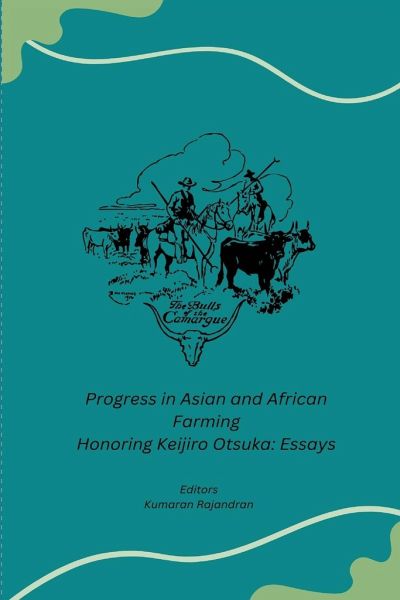Nicht lieferbar

Progress in Asian and African Farming Honoring Keijiro Otsuka: Essays
Versandkostenfrei!
Nicht lieferbar
This volume is a compilation of essays written by top researchers on the topics that Prof. Keijiro Otsuka has been working on in his career. The authors have had either a chance to work with him on a research project or are simply his good friends in the profession. The essays were written in a way easily understandable by people in many different disciplines. The aim of the volume is to identify the pathways of agricultural development in Asia and Africa. It evaluates whether Africa is following in Asia's footprints. This volume has a resounding message that Africa is becoming the next Asia a...
This volume is a compilation of essays written by top researchers on the topics that Prof. Keijiro Otsuka has been working on in his career. The authors have had either a chance to work with him on a research project or are simply his good friends in the profession. The essays were written in a way easily understandable by people in many different disciplines. The aim of the volume is to identify the pathways of agricultural development in Asia and Africa. It evaluates whether Africa is following in Asia's footprints. This volume has a resounding message that Africa is becoming the next Asia as it benefits from the earlier experience of Asia in agricultural and overall development. Africa has followed the Asian pathways: borrowed technology from abroad; did adaptive research in rice farming (modern seeds, fertilizer, and mechanical technologies); secured property rights on natural resources; adopted information and communication technologies (ICTs); invested in human capital, including training; and spread high-value revolution. Borrowed technology from abroad and adaptive research have jump-started the Asian-style Green Revolution in rice farming in favorable production environments in Africa and are expected to spread to other areas. In Asia, the Green Revolution resulted in higher food production and lower food prices that led to deterioration in terms of trade of agriculture (i.e., the decline in the price of farm goods relative to nonfarm goods), leading to rapid structural transformation. The most striking feature of structural transformation is the secular decline in the share of agriculture and the corresponding increase in the combined share of industry and services, whether measured in terms of output or employment. Structural transformation in Asia has been the primary driver of the region's rising income and geographic movement of capital and labor.



